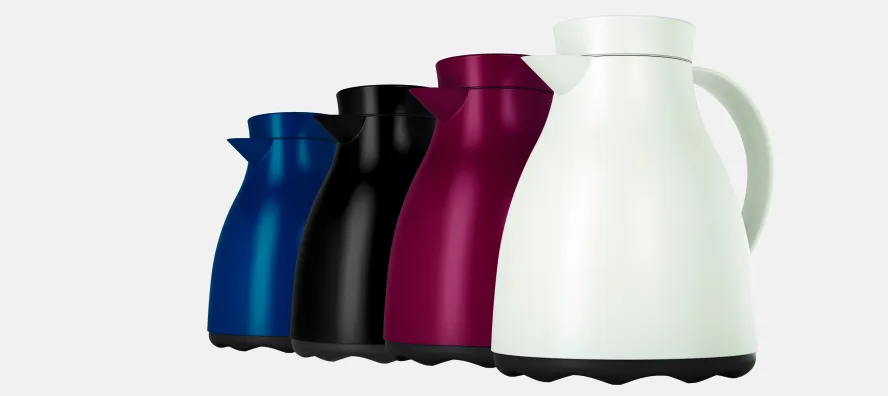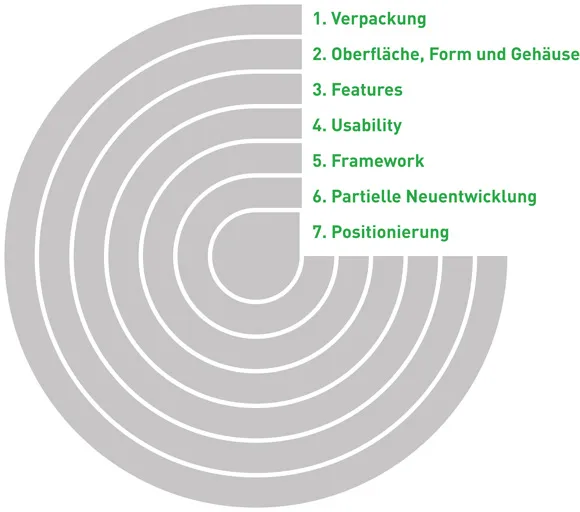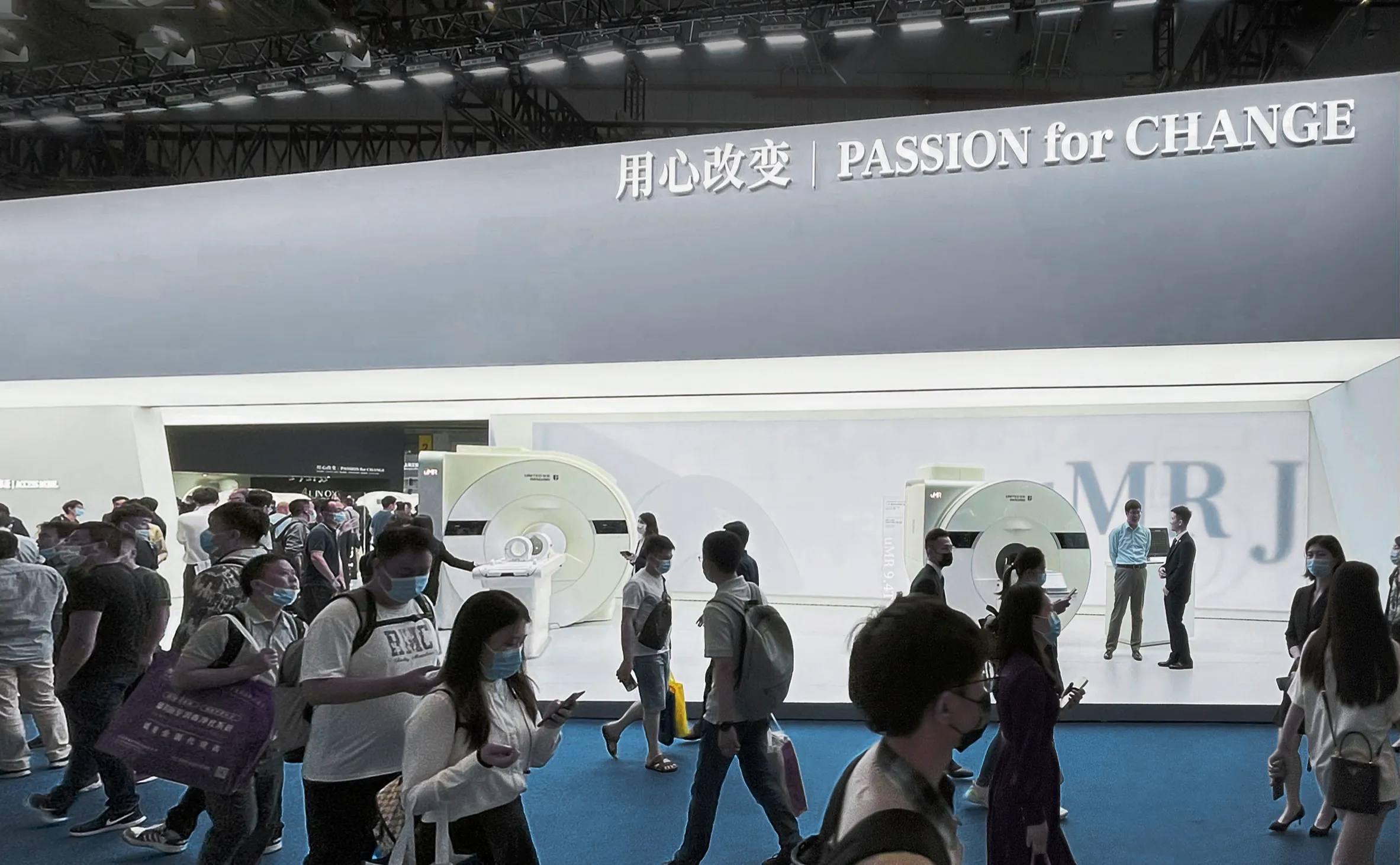Expertise
Product redesign - why and how?
Products today have extremely short life cycles that cannot be explained solely by actual innovation or technical obsolescence. Don't we immediately think of smartphones, whose 2-year redesign cycle is now apparently set to shrink even further? Retail sets the pace.
As a successful player on the global markets, a company must be able to keep up with extremely short and demanding product cycles. But even in more conservative sectors, e.g. capital goods or medical technology, the ability to successfully redesign at the right time plays a major role. This article deals with the 7 basic levels on which successful redesign can be based in practice.

As natural as evolution in nature?
Redesign could be seen as a quasi-natural evolutionary process: A product is constantly improved and further developed on the basis of selection (purchasing decisions) so that it is better adapted to the harsh reality and constant change in dynamic consumer markets. For example, we have seen Apple's iPhone transform from the first 2G model into the iPhone 7 and 7 Plus in the space of just nine years through ten systematic redesigns.
A similar example, but over a much longer period, is provided by the Volkswagen Beetle: the world's most popular car was developed very slowly and carefully between 1938 and the end of production in July 2003. The relaunch in 1997 with the New Beetle was remarkable in that VW successfully positioned the Beetle in a completely different group of buyers and price category. The examples show that there is actually more intention than naturalness behind the development processes.
No redesign without a purpose!
It is worth looking at the purpose behind the redesign. There are four basic approaches to redesign that can be used to drive product development (according to Smith, Smith & Shen, 2011).
- Redesign to solve problems: One example from our practice is the Easy-Clean vacuum jug from Emsa. Our task was to create a fresh and dishwasher-compatible design for a modern and universal jug. The corrugated base is used, among other things, for better drying after the wash cycle.

- Redesign to reduce costs: Over time, market pressure on price and therefore on production costs increases. Technical simplification or rationalization can contribute to cost reduction. If the product price is reduced, the price/performance ratio improves and the value of the product increases in the eyes of the consumer.
- Redesign for unification: Developers often combine products into groups or families to reduce costs by rationalizing functions, components and subsystems. By creating commonalities while retaining the core features within a family of products, profit margins can be effectively increased. In the automotive industry, the comparable term platform design is also used.
- Redesign as an approach for new product development: New products are often derived from existing products. This is quicker and safer than developing a radically new product from scratch. An excellent example of this is the Elisa 800 from Salvia medical, as shown here in the video.
The onion model: seven levels of product redesign.
In order to choose the right focus and systematically meet the requirements of the market, creative developers peel the product from the outside in, like an onion. Superficial changes such as packaging, material variations and colors are easier to change and are usually perceived by the customer as a significant increase in value. That is why they are so popular. Deeper changes to the core functionality, technical modifications or software changes, on the other hand, are much more difficult to implement. Product developers and designers are faced with the question: which changes are both effective and cost-efficient and are perceived and valued positively by the consumer?
The following seven levels start on the surface and penetrate deeper and deeper into the core of the product.

1st packaging
In addition to the protective function for the product, well-designed packaging should warm consumers up to the product and encourage them to buy it. Design changes to the packaging are therefore a simple means of positively influencing customer attention without having to make major changes to the product.
2. surface, shape and housing
The surface is the visually perceptible side of the product: colors, shapes and textures. The surface must communicate to the viewer the type and value of the product. The brand identity should also be reflected in the surface.
The physical properties of the product become tangible in the housing: through shapes, materials and grip. Redesign at this level requires appropriate manufacturing technologies that are mold- or tool-based. The example of the pyrometer (see above) shows a clear stylistic change to create a new family design without compromising other features such as usability.
3. features
More and better features - that is the common approach in product management. However, this is not always the right approach. There are successful product improvements that have been achieved by reducing the number of features: Focusing on the essentials as the key to success. In this respect, customer feedback on previous product versions is an important element in making the right decisions.
4. usability
Improving user-friendliness and workflow is a sensitive matter: it makes sense to look at users' consumption and usage habits. Even a small change can cause considerable problems if the user no longer finds their familiar environment. Microsoft delivered an example of how small changes in user-friendliness can have an effect years ago with its Windows 8 menu. Windows users were used to this menu at the bottom left, but after the update it was no longer there. Instead, users were directed to the Windows keyboard and had to get to know a new key. After countless complaints, Microsoft decided to reverse this "improvement" a few months later.
5. framework
Changes to the technical framework or individual components are other popular ways of redesigning a product. Better touchscreen technology or higher-resolution cameras are a must for the next generation of smartphones. In most cases, this requires deep interventions in the technical architecture and the housing.
6. partial redevelopment
If changes are to be made on many levels, the product developer must decide whether a redesign is the right strategy at all. A new design often makes more sense here because it allows you to leave the limitations of the old design behind.
7. positioning
A relatively rare but very effective approach is to redesign the entire concept of an existing product and position it in a different market or price segment. This involves creatively fighting against the habits of consumers and the market.
One example is the Jägermeister brand. The product, which was changed only minimally, was successfully positioned in a new target market with an advertising campaign that was as bold as it was elaborate, and was able to maintain its new position beyond the initial hype.
Plan product redesign systematically.
Product designers play a key role in the success of a redesigned product. They are responsible for determining the levels at which the redesign must start in order to achieve the most positive effects. The significance of the product redesign process will become more important in the future. The reason for this lies in the dynamic nature of the markets: shifting customer needs, technological progress and global access to all products via e-commerce platforms. To ensure product success, companies need to internalize an essential concept: Change is the only constant.
References: Smith, S., Smith, G. & Shen, Y.-T. (2011). Redesign for product innovation. Taiwan: Elsevier.
Frequently asked questions



